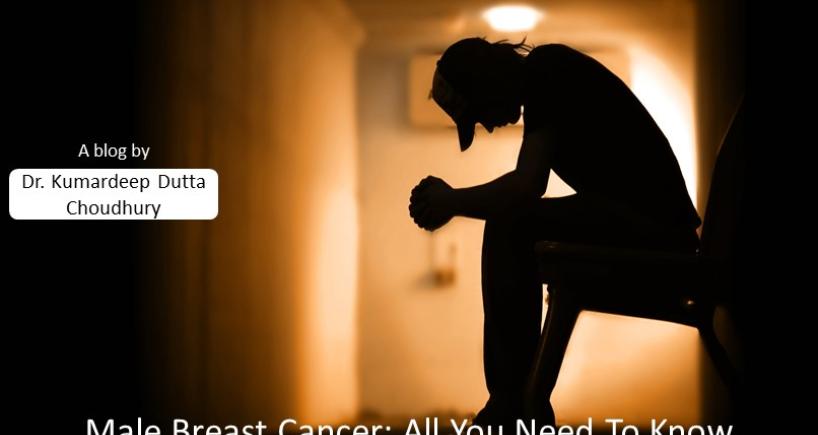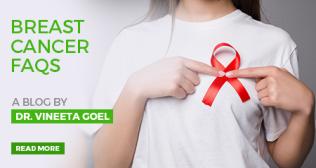Male Breast Cancer: All You Need To Know
Male Breast Cancer: All You Need To Know Aug 13, 2020

Breast cancer in men is rarely seen. It shares many similarities with cancer of the breast in
women but there are some important differences too. Male breast cancer represents between
0.5 and 1 percent of all breast cancers diagnosed each year. In areas of central Africa, male
breast cancer accounts for up to 6 percent of all breast cancers. Higher rates of male breast
cancer in central and eastern Africa may be related to higher liver
infectious diseases that lead
to hyperestrogenism.
Risk factors associated with breast cancer in men are –
Genetics and family history — Family history of
breast cancer in a first-degree relative is
associated with an increased risk of breast cancer among men. Approximately 15 to 20 percent
of men with breast cancer have a family history of the disease compared with only 7 percent of
the general male population. The risk is higher with inherited BRCA2 rather
than BRCA1 mutations. Other genes which have been associated with an increased risk of
breast cancer in men are PTEN tumor suppressor gene (Cowden syndrome), tumor protein p53
(TP53; Li-Fraumeni syndrome), partner and localizer of BRCA2 (PALB2), and mismatch repair
genes (Lynch syndrome).
Alterations of the estrogen to androgen ratio — Excessive estrogen stimulation may be due
to hormonal therapies (eg, estrogen-containing compounds or testosterone), hepatic
dysfunction, obesity, marijuana use, thyroid disease, or an inherited condition, such as
Klinefelter syndrome may increase risk of male breast cancer.
Primary testicular conditions — Testicular conditions may increase risk of breast cancer in
men include orchitis, undescended testes (cryptorchidism), and testicular injury.
PRESENTATION:
Male breast cancer has been diagnosed at a more advanced stage than female breast
cancer, due to a lack of awareness. They generally present with a painless, firm mass
that is usually subareolar, with nipple involvement in 40 to 50 percent of cases. The left
breast is involved slightly more often than the right, and less than 1 percent of cases are
bilateral. There may be associated skin changes, including nipple retraction, ulceration,
or fixation of the mass to the skin or underlying tissues. Axillary nodes is typically
palpable in advanced cases.
Most histologic subtypes of breast cancer seen in women are also present in men, men
with breast cancer are rarely diagnosed with lobular carcinomasis due to lack of acini
and lobules in the normal male breast, although these can be induced in the context of
estrogenic stimulation.
TREATMENT:
Approach to treatment in men is same as that for women. However role of breast
conserving surgery is limited because of small volume of breast tissue. In hormone
receptor-positive disease, we giveadjuvant tamoxifen rather than an aromatase inhibitor
(AI), because of insufficient evidence to support AI monotherapy for men. If there is
contraindications to tamoxifen (eg, hypercoagulable state), an AI with GnRHa may be
administered. AIs do not reduce testicular production of estrogens, that’s why GnRHa is
administered concurrently with AI. They are treated with mastectomy,
radiotherapy,
chemotherapy and hormone therapy.
SURVEILLANCE:
Limited data suggest these patients are at an increased risk of a contralateral breast
cancer but absolute risk is low. They are also at risk for secondary malignancies and
12.5 percent may develop a second primary cancer. The most common types were
gastrointestinal, pancreas, non-melanoma skin, and prostate cancer
PROGNOSIS:
Ten-year disease-specific survival rates for histologically negative nodes – 77 and 84
percent, one to three positive nodes – 50 and 44 percent and four or more histologically
positive nodes – 24 and 14 percent.Dr Kumardeep Dutta Choudhury
Senior Consultant & Head of Department
Dept of Medical Oncology (IOSPL)
Fortis Hospital, Noida and Faridabad





















